Wake Forest Football Offensive Preview
I can't even remember the last time Cal played Wake Forest. Probably because it's never happened before. Again.
Wake Forest was founded as the Wake Forest Manual Labor Institute, where boys as young as 12 could trade manual labor for religious training at the facility. Founded as a Baptist College, their nickname was often the “Baptists” or “The Old Gold & Black”, until 1923 when they beat Trinity College (the precursor to Duke) and the student paper referred to them as the “Demon Deacons” for their “devilish play.”
Wake Forest has a relatively new tradition called “Open the Gate,” which was established in 2008. This tradition honors individuals who have made significant contributions to the Wake Forest and Winston-Salem communities by having the honoree ride on the back of a motorcycle with the mascot as they lead the football team onto the field.
Of course, only important Wake Forest heroes are allowed on the back of the motorcycle, like former star of The Bachelor, Matt James.
Wake Forest runs a variation of the RPO offense known for its “slow mesh” concept. The idea behind the slow mesh RPO is to isolate defenders with both run and pass responsibilities (e.g. linebacker, safety). And with the slow mesh, it’s not just about reading a single player, it’s often reading multiple defenders before making that RPO decision. Same as it is for the run-pass option (RPO) offense, the general idea is to find where you have the numbers advantage—in the pass or the run—and take advantage of that. If the defense commits defenders to stop the run, you have pass lanes open, and if they defend the pass, you have run lanes open. The idea is to make the defense wrong regardless of the option they pick.
There are a few common ways that teams defend this. You can play full man coverage, and force their players to beat your players. If you have a strong defensive line or a creative blitz package, individual effort can blow up a play (i.e. it doesn’t matter if the QB or RB is holding the ball on the mesh when a defender crashes through the line to attack that mesh). You can slow play the slow mesh RPO, in which you first defend pass (so the offense reads: run) and then immediately crash down on that run, but this gives up small but consistent chunks of yardage.
This also presents a unique challenge to the offensive line and will look strange to defensive players who haven’t seen before. As a quick reminder, an ineligible man downfield penalty is when an ineligible receiver (say, an offensive lineman) is blocking more than 3 yards downfield on a pass thrown past the line of scrimmage. See here for an example (or two): https://i.imgur.com/pcGE140.png.
This means that on the slow mesh, offensive linemen have to defend every play like it’s a pass. If you’re a linebacker and you see an offensive lineman coming up to meet you, you know that you are playing the run. On the slow mesh, the offensive line has to stay put and allow the run defenders to come to them at the line of scrimmage, even on designed run plays. This makes it a lot harder for the defense to guess if it’s a run or pass play, and probably also feels a little weird to defend.
Because offensive linemen can’t block downfield in the case of a pass, this often leaves linebackers unblocked as an OL will instead double team a down lineman (the “duo” concept). This means that although there are unblocked linebackers, there are also more running lanes for the running back to choose from, and the RB needs to find that empty gap (and you check the RB section here to see how that goes).
Defenses can struggle because it’s unique and quite different to defend, so how much preparation are you really doing for something you only see once a year (sorry, 2022 David Shaw)? The bye week came at an opportune time for Cal.
Now let’s take a look at some of the key players that will be running this offense for Wake Forest.
Quarterback
The Demon Deacons are led by the 6th-year senior, former Boise State and Louisiana Tech transfer QB Hank Bachmeier. Hank also happens to be the older brother of Stanford wide receiver Tiger Bachmeier and Stanford commit QB Bear Bachmeier. Wake Forest runs a unique offense that relies on the quarterback consistently making the correct read, and who better to run such an offense than a very experienced quarterback?
First, because the slow mesh is a type of RPO-offense, it’s important to have a quarterback with the athleticism to run the ball when it’s time to keep it on that RPO. Although Bachmeier isn’t going to set the world on fire with his speed or shiftiness in the open field, his solid frame and stout running style allows him to pick up chunk yardage when he keeps the ball himself:
Bachmeier is sturdy, and can survive the tackle to keep the play alive:
Although Bachmeier can be affected by pressure, he generally shows good poise; often times not panicking or rushing the throw as he tries to buy some extra time for his receivers:
Here’s an example where Bachmeier felt pressure, but stayed collected enough to fire off a nice back shoulder throw for the touchdown:
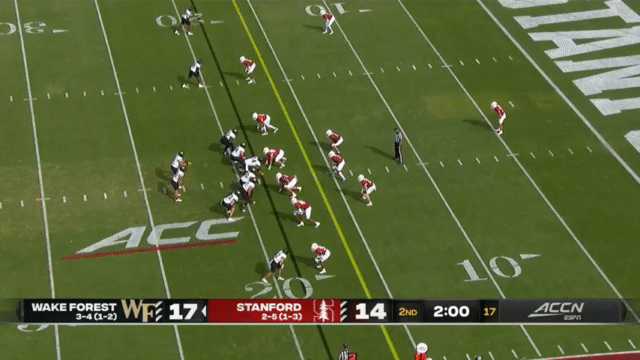
Bachmeier will often leave the pocket under pressure, making half-field reads and throws on the run:
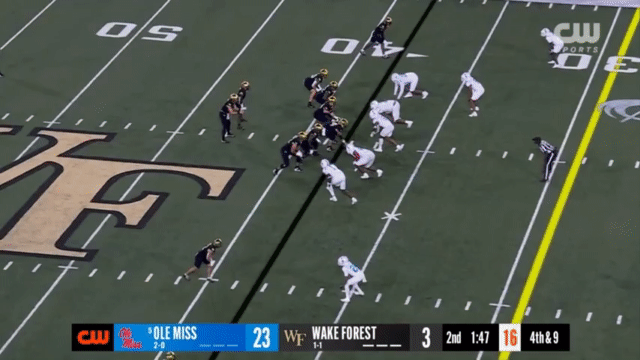
This is just a toughness play, where Bachmeier knows he’s going to get hit but makes the throw anyway:
Here’s another example where he stays calm to find the open receiver:
Bachmeier’s accuracy can be inconsistent, but it’s better when he has time and sets his feet on the throw (although he doesn’t have overwhelming arm strength either):
With corners often isolated in man coverage, Wake Forest likes to mix in deep shots down the field. And although Wake Forest is often attacking the middle of the field (as a result of the slow mesh pulling those run/pass defenders into run support), I think Bachmeier’s best throws are touch throws that he layers over defenders on shots down the sideline (i.e. to the outside):
And another nice shot to the outside:
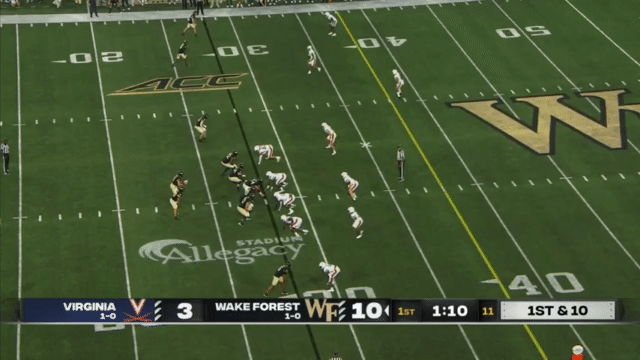
And again, with this play probably pre-determined:
Of course, the above plays are highlights, and not really a standard representation of the throws he will always make. In fact, this outside shot happens to be one of his least often successful throws, and often puts the onus on his receiver to make that play. A good counterpoint:
Like most quarterbacks, Bachmeier is affected by pressure, and more liable to make a mistake when he’s rushed. On the following play, he knows his receiver will be open, but is unable to connect on the throw:
The next play is honestly a pretty cool screen pass, with the entire offensive line as a vanguard of blockers. Here, the offensive line intentionally lets the pressure through for the screen, but Bachmeier is unable to connect on the throw even knowing that the pressure is coming:
Here Bachmeier just makes a bad read in trying to force this throw:
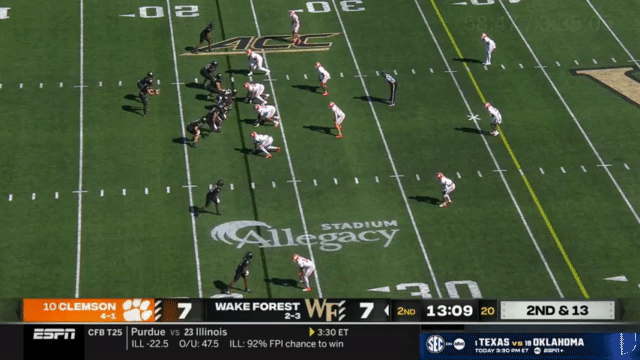
Bachmeier’s accuracy can be inconsistent at times. Although he excels on quick read throws like this slant, even that throw isn’t a given:
I feel like Bachmeier can overcompensate on some throws when trying to fit them into tight windows, resulting in a ball thrown too hard and/or less accurately:
Another good example of this:
Bachmeier doesn’t have exceptional arm strength, so when it comes to the deep ball, he will often either sail the throw or (more likely) underthrow it, forcing his receiver to adjust:
Bachmeier’s backup is long time Wake Forest backup and another sixth year senior in Michael Kern, who briefly started for the Demon Deacons in the season-opener. He wasn’t as efficient as Bachmeier in that opening game, and I haven’t really seen enough to judge him, but he did have this nice throw:
(That’s the only other “Jaydn” to play in the FBS this year, by the way).
Expect to see a lot of short yardage throws, particularly over the middle of the field, based on the reactions of the non-box defenders.
Running back
The real engine that drives this offense is the running back, Demond Claiborne; one of the most underrated running backs in college football. Claiborne is a very talented back, and the offense lives and dies by his play. When he’s in, Wake Forest is a dangerous team on the ground, and the run game has to be respected, which opens up the passing game. Without him, the offense struggles to do either. Nationally ranked Ole Miss and Clemson had dominant defensive lines which were able to disrupt the run game at the point of attack, and Wake Forest suffered blowout losses as a result (40-6 Ole Miss, 49-14 Clemson). Wake Forest’s other two losses were Virginia and Louisiana (formerly Louisiana-Lafayette if you weren’t aware), which was a come-from-behind victory for the opponent in both games. Wake Forest also squeaked by with 3-point victories over Stanford and UConn after being outscored in the 4th quarter of both games. The common denominator? Claiborne’s absence late in the 4th quarter.
(As a brief aside, you might think the Louisiana game isn’t the best example of this because Wake Forest still scored late in that game with their backup running back. However, in my view, this was a result of four defensive starters being ejected for Louisiana, at which point, WF finally started having more success on offense. It just happened to be the very same ACC ref crew for the Cal-Miami game which couldn’t identify a targeting hit that checked all of the boxes for targeting, when just one was required. The offense was still much better with Claiborne, it was that Louisiana’s defense suddenly got a lot worse).
And Wake Forest’s only come-from-behind victory? It was at NC State, where Claiborne had 11 of his 20 carries plus 2 receptions on the final two drives, which both resulted in touchdowns.
A lot of times when I write these articles, I struggle trying not to use too many platitudes when describing players, particularly because I only want to focus on a player’s positives, which might often miss half the picture. It’s hard to express something like last week’s running back was fast, but this week’s running back is also fast, but also he doesn’t have negative traits that I didn’t want to mention about last week’s running back. So I end up saying meaningless things like “running back fast” or something.
I don’t have this problem with Claiborne, because there is one particular area where Claiborne excels like no other opposing running back I’ve watched this year: his patience and his vision. It’s an absolute necessity in Wake Forest’s slow mesh offense (and a big reason why David Shaw’s Stanford team failed in its adoption, despite their historical offensive line talent), and perhaps Claiborne’s exceptional vision was improved as a result of the style of play. Claiborne has to be able to find the ideal running lane when facing unblocked linebackers, and he often has to wait until the last possible moment to decide where that is as the defense closes in on him.
Here Claiborne does a great job of finding his lane, and makes a great cut to beat the defense:
On this play, it doesn’t look like any of it was planned, but Claiborne is able to weave his way in and out of traffic and still somehow pick up a first down:
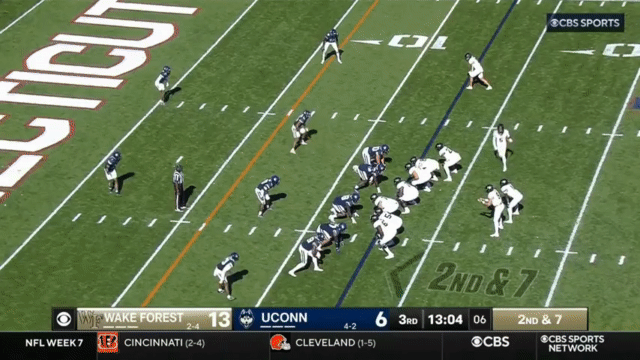
Claiborne isn’t known to be a homerun hitter, but he still has plenty of speed:
In my view, Claiborne’s burst is much more impressive:
Claiborne will try to make defenders miss in the open field, and he’s particularly fond of the spin move:
Although Claiborne isn’t the type of runner to bulldoze through tacklers, his initial acceleration lets him break a lot of weak arm tackles:
Claiborne isn’t a huge part of the passing game, but he has received a lot more targets this year as Wake Forest looks to stretch the field, as Claiborne should command the defense’s attention:
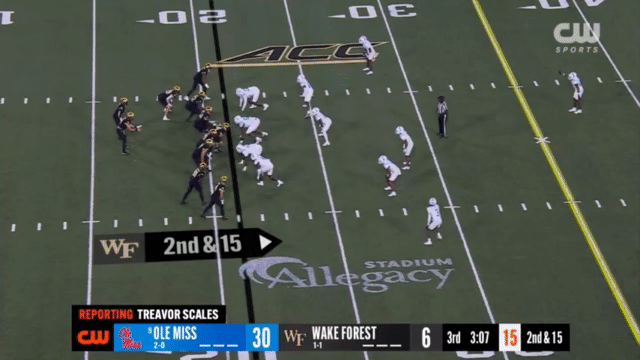
This is probably the only time I can recall him running an actual route (more than just vacating to the flat):
I think Demond Claiborne is an NFL talent worth at least a late (5th-6th?) round pick, but yet I haven’t heard anything about him in NFL circles. Claiborne is the best running back Cal will have faced this year (Pitt’s Desmond Reid is really good, but more so as a dual running/receiving threat), and will be the best running back Cal will face this year (until perhaps the final week of the regular season against SMU). Cal will have their hands full in trying to stop Claiborne.
Claiborne’s relief is the seemingly stockier Tate Carney. Carney runs with a low center of gravity and, in contrast to Claiborne, is absolutely looking to run through defenders instead of past them. Carney probably isn’t going to take it to the house, but he will break some tackles:
And here he runs through some ankle tackles to pick up the first down in what was likely a short yardage play call:
Any time you truck a Stanford defender, you find your way into my highlight clips:
Here Carney gets an assist, but you can see just how low to the ground he runs while making sure he’s always falling forward:
Stopping the Wake Forest run game will be key to stopping this offense, and forcing Wake Forest to rely heavily on Claiborne early may cause them to struggle down the stretch.
Receivers
Wake Forest does a good job of distributing the ball to different receivers. Their most talented receiver in my opinion is Donavon Greene, who has been out with an injury since Week 5’s game against Louisiana. Head coach Dave Clawson remarked at a press conference earlier in the week that Donavon Green “is doubtful; consider it about 50/50." Still, he’s worth covering in the event that he plays, because he’d likely have a big impact.
Greene is an NFL-caliber receiver, although his injury history may have a negative effect on his draft stock. He’s a very polished receiver with solid receiver fundamentals: body positioning, strong hands, and contested catch ability.
Here he does a nice job of adjusting to the throw:
Greene does a good job of hanging onto the ball even when he has to take a big hit. Here he hangs on despite contact:
He’s a strong runner with the ball:
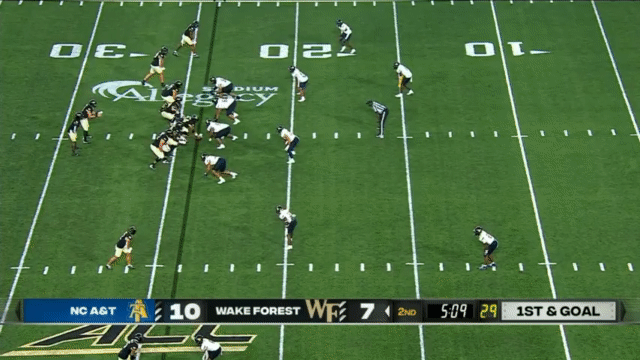
Here’s another example where he does a good job of adjusting to the throw in the air and again hangs onto the ball despite the hit:
Greene has strong hands and does a good job of making catches with his hands instead of his body:
Bachmeier’s favorite receiver is the primary slot receiver, Taylor Morin (although he’s lined up wide more often since Greene’s injury), who leads the team in receptions. Wake Forest’s offensive scheme results in a lot of targets over the middle of the field, and Morin is the team’s leading receiver as a result. Although Morin isn’t the biggest receiver, he’s a crisp route runner with the ability to quickly get separation.
Morin can get open quickly, although he’s not generally known for an ability to pick up a lot of yards after the catch, here’s a nice one:
Here he does a good job of adjusting to a less than ideal throw:
On the outside is Horatio Fields, who is actually the team’s most targeted receiver (although those outside deep shots have a much lower success rate than Morin’s middle of the field targets). Here Fields does a good job of high-pointing the football:
And here’s another nice catch with his hands, but I think this throw shows Bachmeier’s trust in Fields: this is a throw you make when you can count on your receiver to go up and get the ball for you:
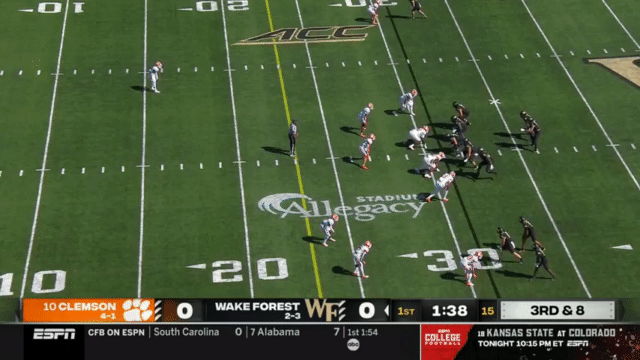
The third most targeted receiver behind Fields (52) and Morin (51), is the backup slot receiver, who has an impressive 46 targets for 29 catches despite playing in relief:
Although he’s not as wide open as Morin usually is, here he makes a nice contested catch:
The backup to Donavon Greene is the redshirt freshman Micah Mays Jr., who has been pretty sharp in relief of Greene. Here he smokes the corner to get wide open:
And here’s a play where he had some nice yards after the catch:
Wake Forest isn’t a team that uses their tight ends as receivers very often, but this is the starting tight end, Harry Lodge:
And while the following isn’t a receiving play, this block goes straight to the highlight reel:
Wake Forest will spread the ball and has a lot of depth at the receiver position to choose from.
Conclusion
Everyone knows that Cal has a really good defense, but the Wake Forest offense will present a unique challenge for the defense schematically. Justin Wilcox has outschemed innovative offenses in the past, like the Mike Leach Air Raid. Will Wilcox have the answers to the Wake Forest Slow Mesh RPO? I don’t think the Cal defensive line will be able to overpower the offensive line consistently, but I think that their receivers will have their hands full with the Cal secondary. I don’t know how Cal will will attack the WF passing game, but hopefully the defense can slow Demond Claiborne enough that we get to find out. The Cal offense should be able to put up points on a Wake Forest defense that ranks in the bottom-15 in the FBS, so the WF offense will determine whether this game is uncomfortably close in the 4th quarter, or if there’s a reason that Cal is touchdown favorites on the road.
Go Bears.
You can find my full clips here.



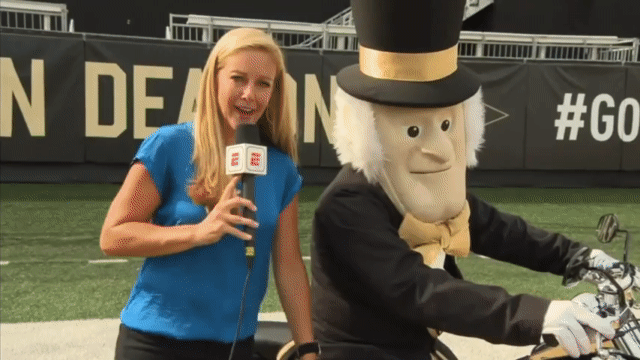
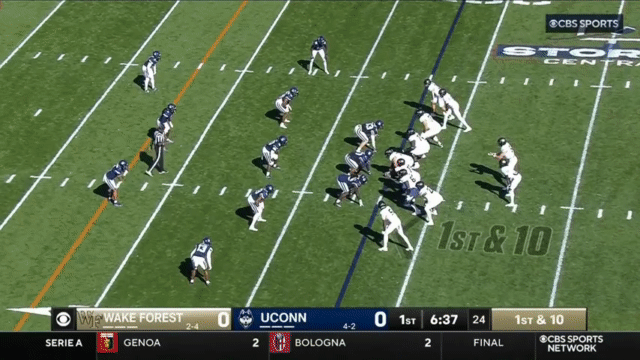
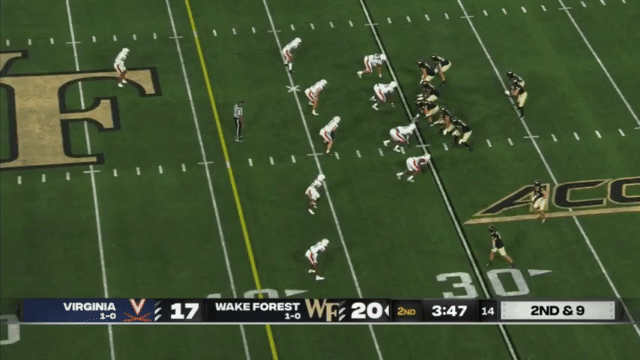
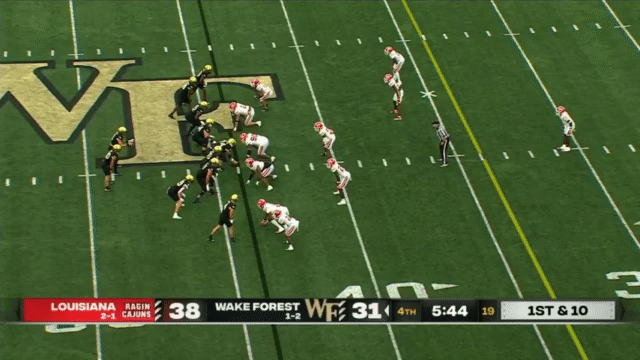
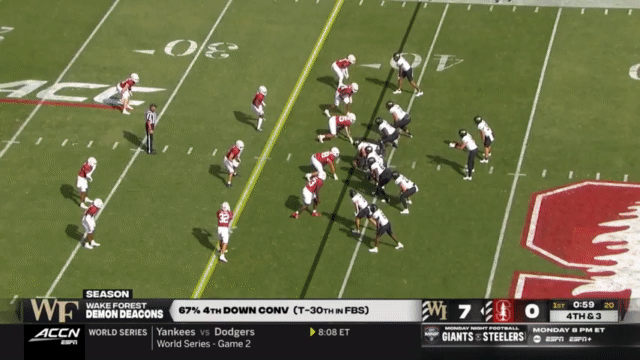
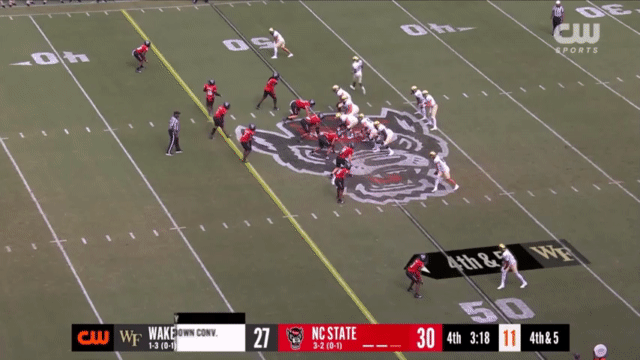
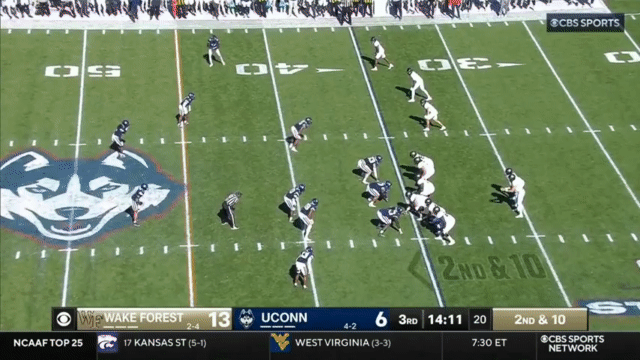
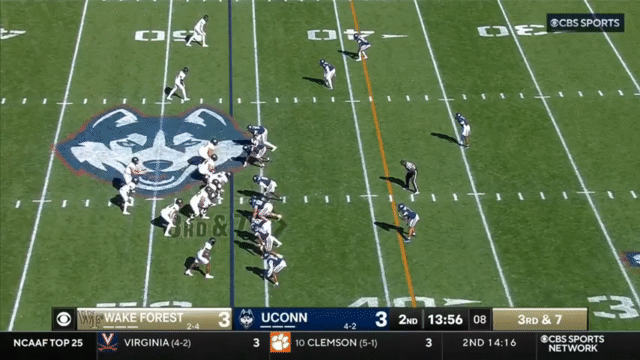
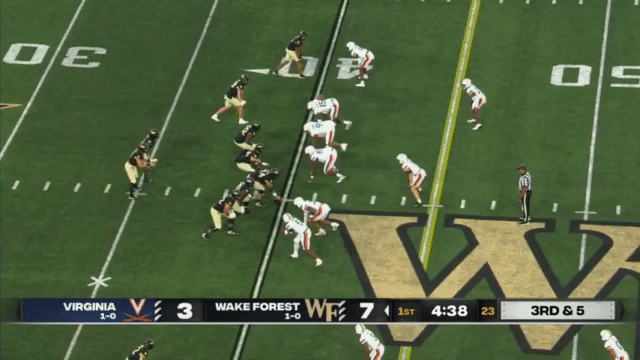
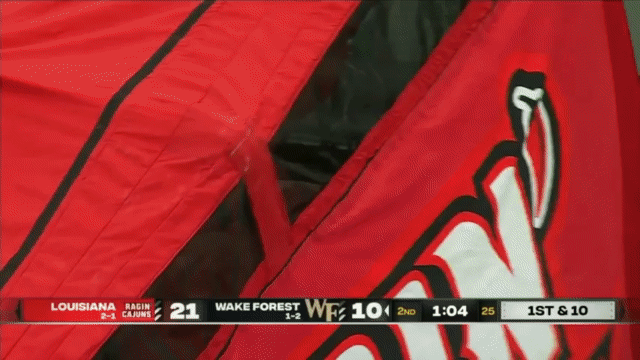
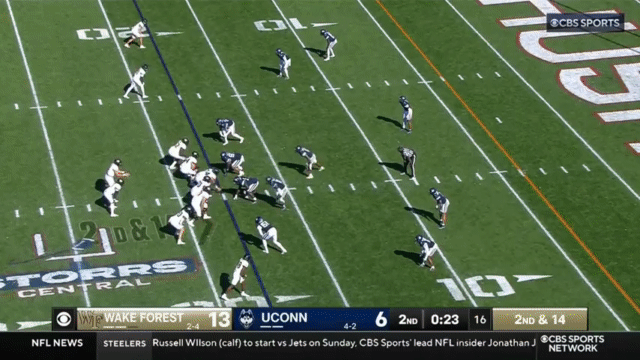
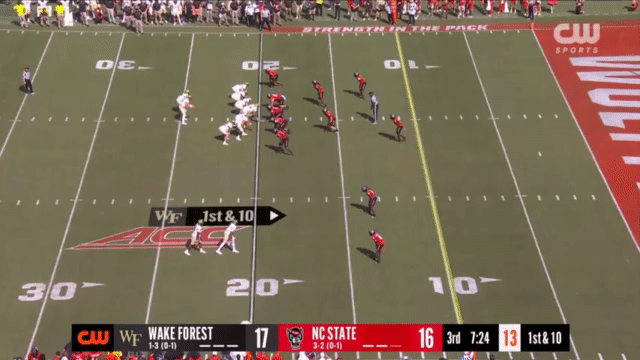
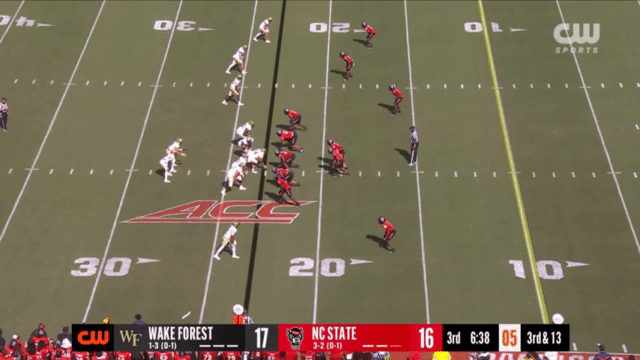
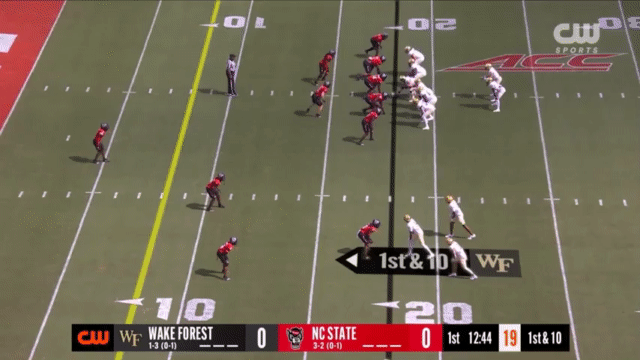
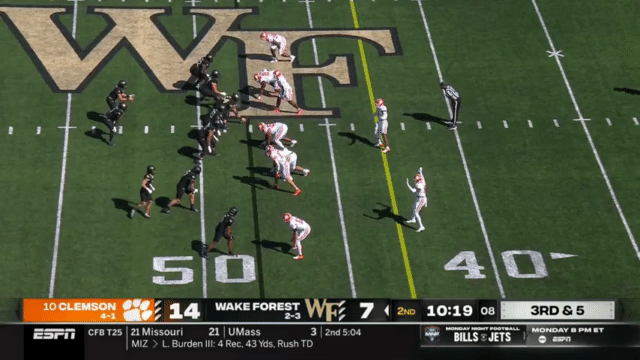
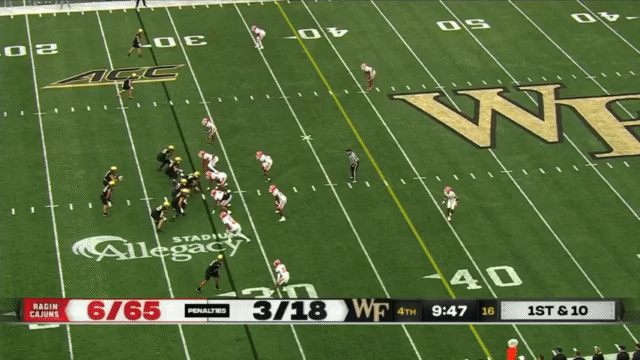
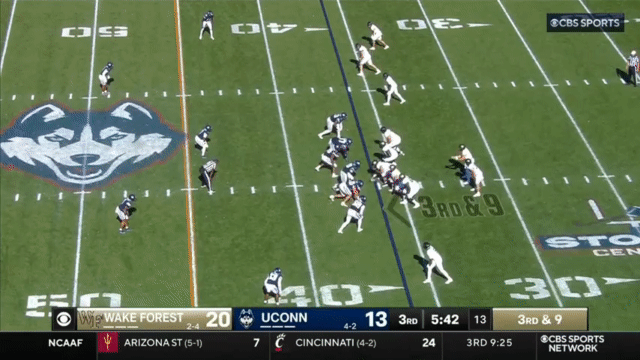
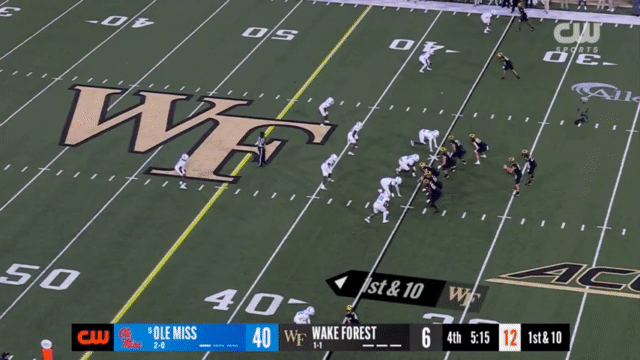
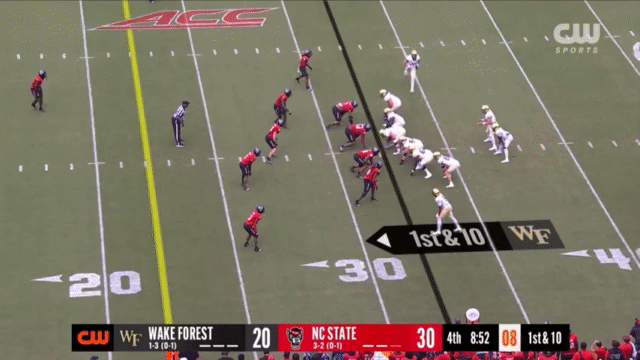
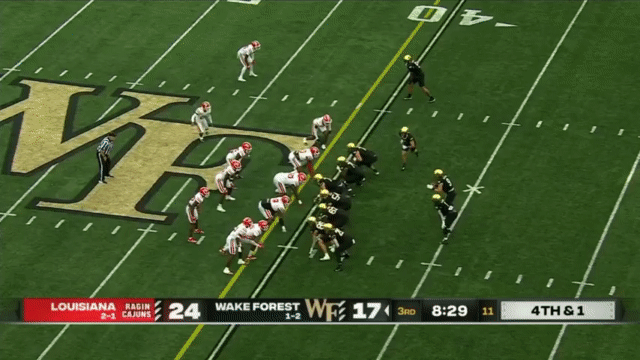
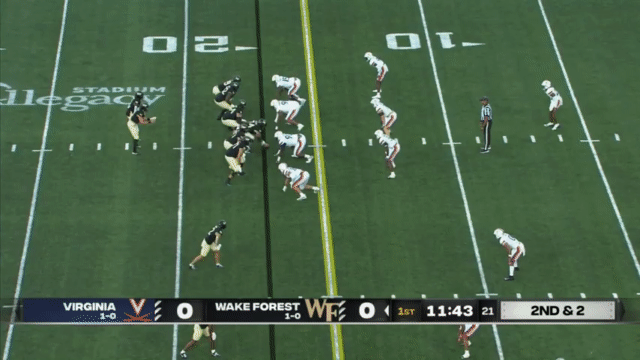
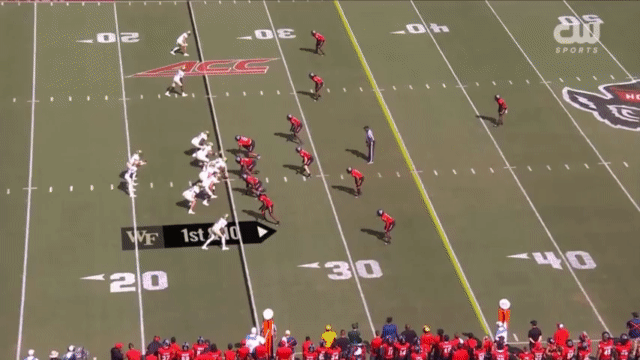
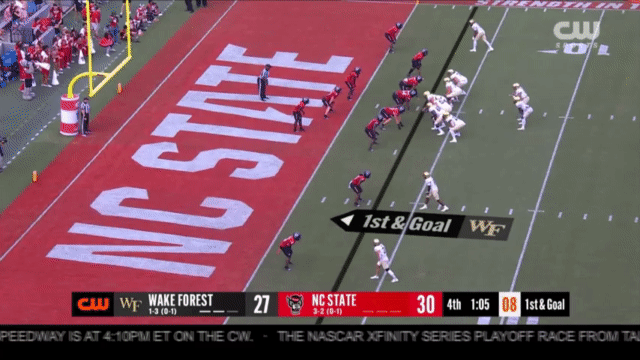
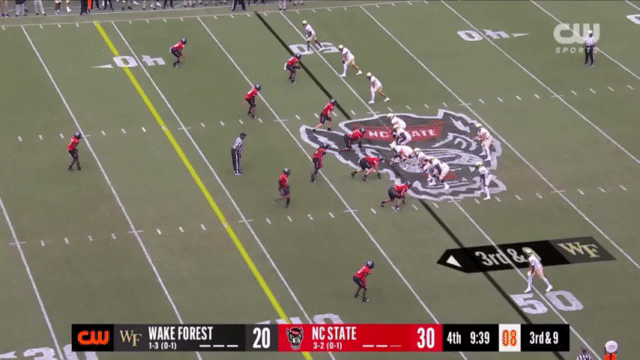
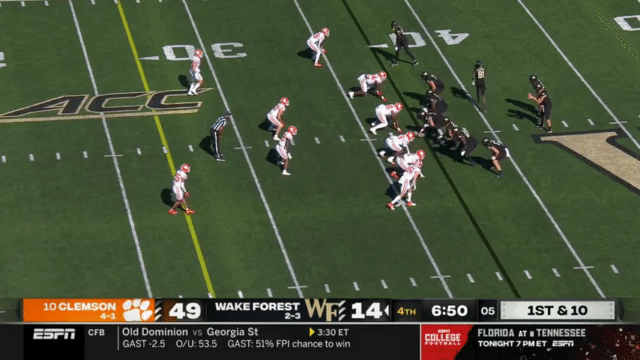
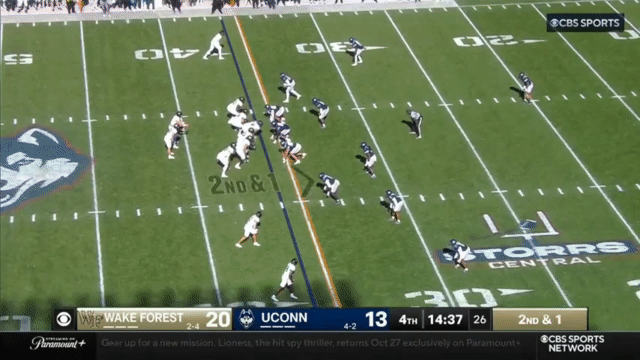
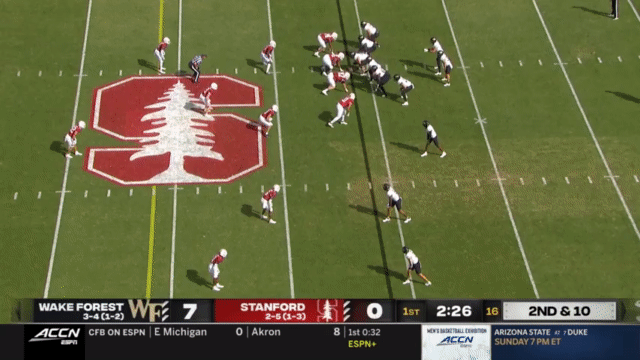
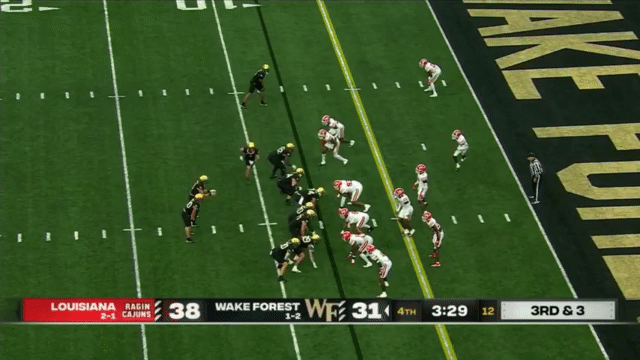
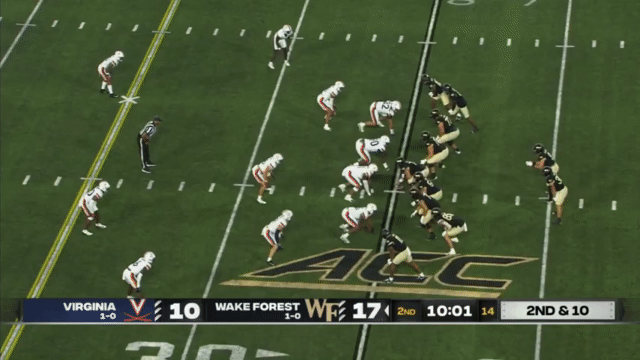
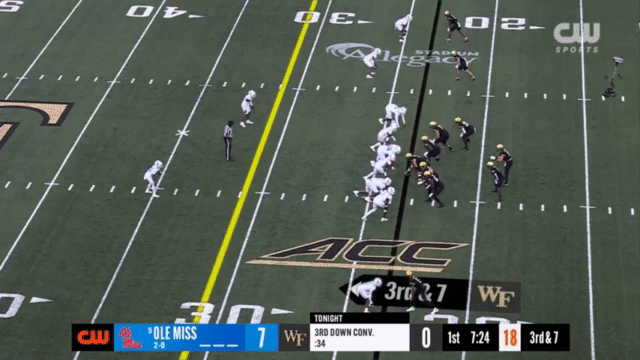
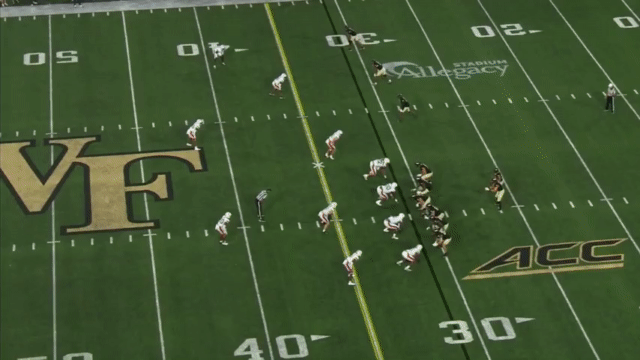
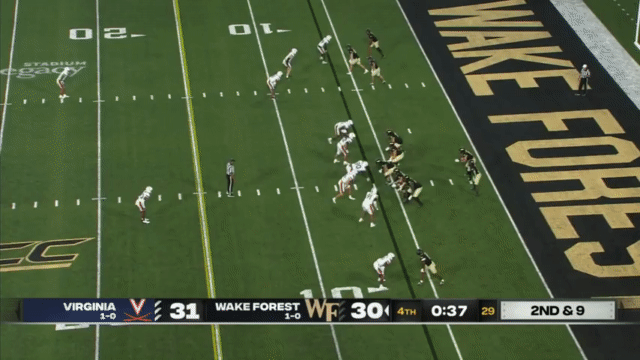
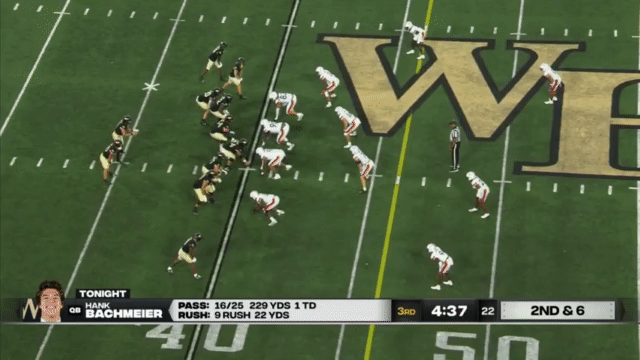
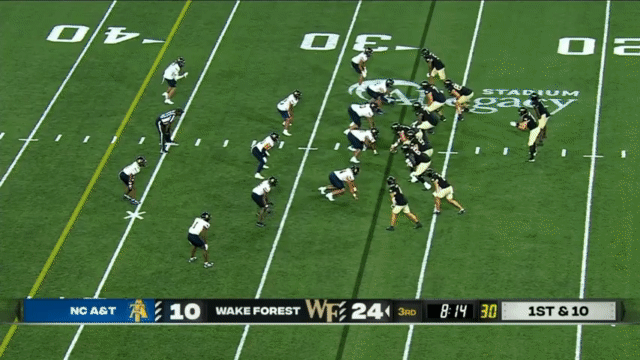
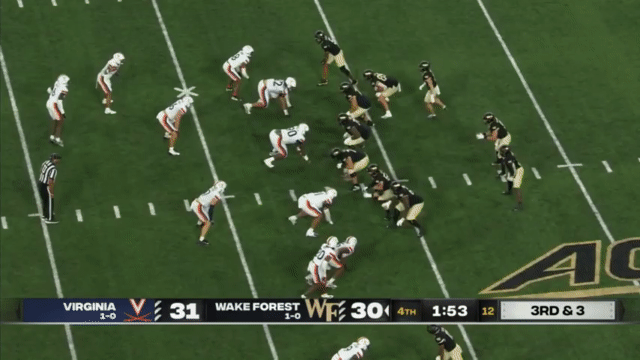
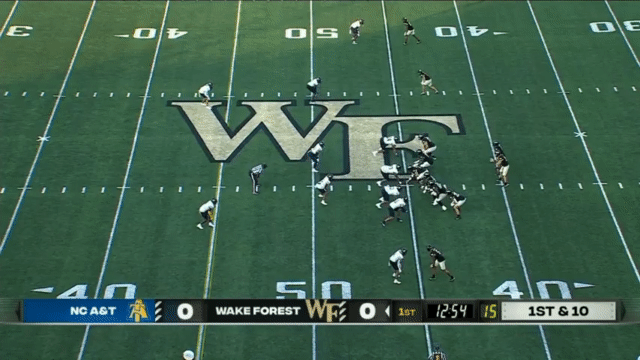
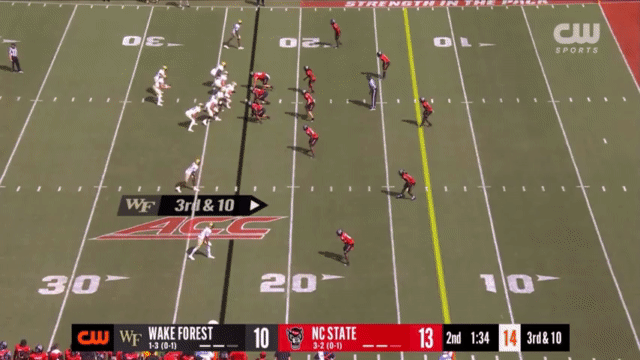
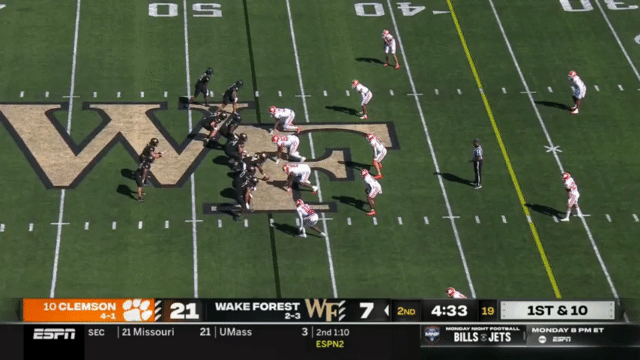
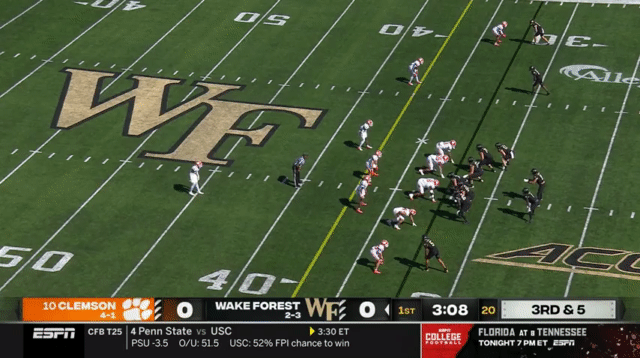
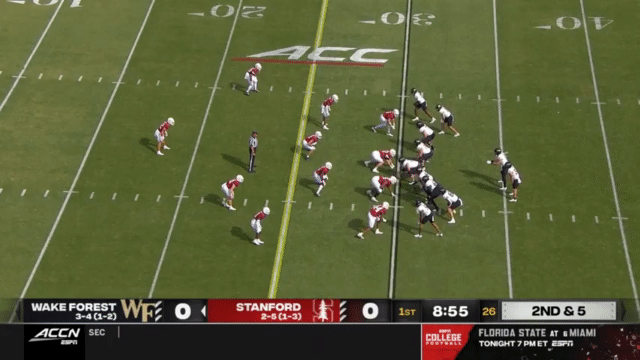
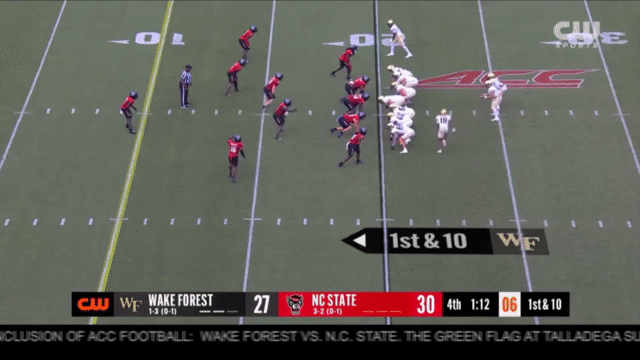
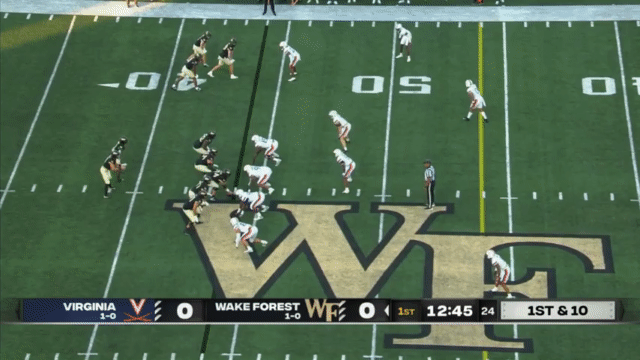
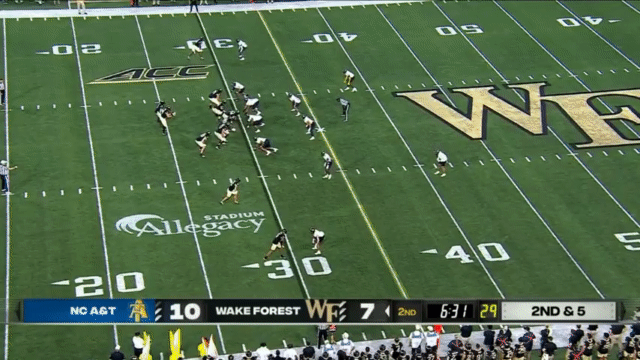
Great work Christopher. I appreciate the slow mesh description, very helpful information. I feel pretty confident our defense will do a good job against it. I did watch their back last weekend; he is a perfect match for that style of offense. I cannot get to this game, but it would be a good one to see in person. My hope is that our OL will have improved during the bye period, so they provide time for Fernando to pass the ball and space for Ott and Thomas to get past the line of scrimmage into the open field. Looking forward to watching the game Friday evening. Go Bears!
I trust in Wilcox and Sirmon to scheme this fine. The Bears have a stout defense this year, when not worn down. The offense is getting players back and maybe finding their footing. I'm looking for a solid win this week. Go Nandobears!